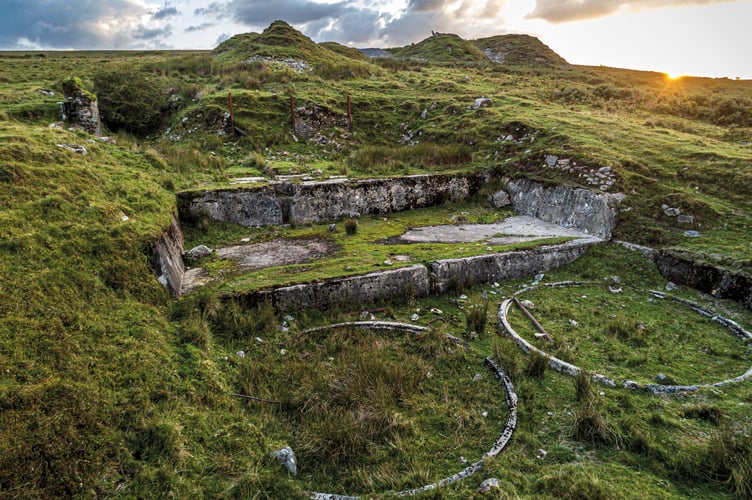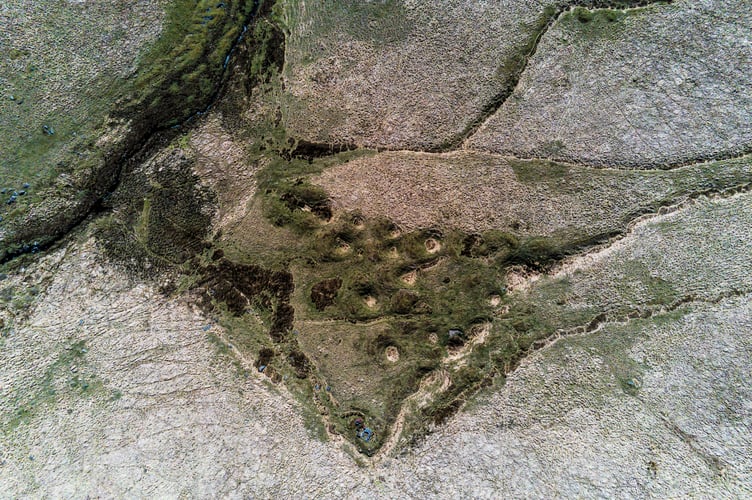A HISTORICAL labour of love so weighty that it once fell and broke one of its author’s feet has been unveiled to the world after more than 15 years’ research.
The Spirit of Dartmoor Tin is a three-volume tome on the importance of tin mining in shaping the lives and landscape of Dartmoor.
The emphasis is on glorious photographs alongside personal stories which include tracing a tin miner who served with distinction in two world wars, despite being gassed in the first and ended up as a PoW in the notorious Colditz prison camp in the second. He eventually died of myocarditis in 1943 in the prison hospital and is buried in Berlin.
They also traced two young miner friends who were both killed on the Western Front during WW1.
The books, which weigh 22 pounds, have 1,800 pages and 3,860 photographs in total and are embossed in tin, were presented to Simon Dell, Tavistock Subscription Library chairman, last week by joint authors and photographers Neil Mercer and Peter Russell. The presentation also marked 225 years since the formation of the library.

Peter said: “We are so pleased to donate a copy of the Spirit of Dartmoor Tin to Tavistock Subscription Library, though it bit back falling and breaking my foot because it’s got a lot of tin embossed inside and outside.”
The book will not be on general public show because of its value as an archive and in monetary terms. It has the numbers two and four in tin on the front – the alchemists’ symbol for tin.

Peter and his co-author are friends and ex-photographic colleagues who met while Neil was in the Royal Navy and Peter working for the Army.
Peter said, “We both flew over and walked on Dartmoor for photography assignments and were intrigued by the history of Dartmoor and the obvious way it has been shaped by man’s activities. So, we satisfied our curiosity by beginning what became a hobby which basically got out of control. Every avenue we looked down turned into an adventure and we loved following the evidence.

“Because man has been responsible for interfering with Dartmoor, we looked at personal lives in its history. One was Harry Vernon Olver, the last Dartmoor tin miner as far as we know, who died in Colditz. He deserved a tribute to honour his mining achievements and service to his country by including him in the book. We also had tin poppies made and laid rocks from Golden Dagger mine at his gravestone.”

The two authors also did the same with Dartmoor soil at the grave of a former US Navy pilot whose Liberator plane crashed at near Meldon Reservoir. The pair had difficulties tracing a US soldier Robert Morris and former miner, photographed training on Dartmoor, who was killed during World War Two and his body repatriated and reinterred in his home town in the US. But after Neil had a chance meeting with a couple on Dartmoor whose son helped to identify the location of the photographs. They tracked his story, discovering his family roots were in Durham mining.




